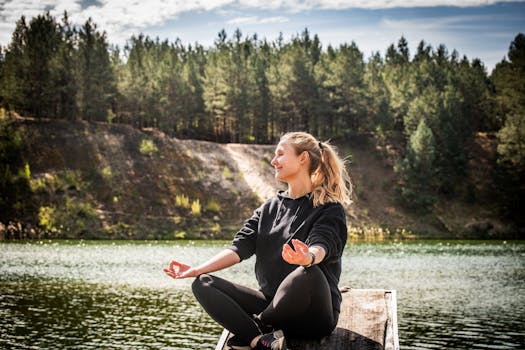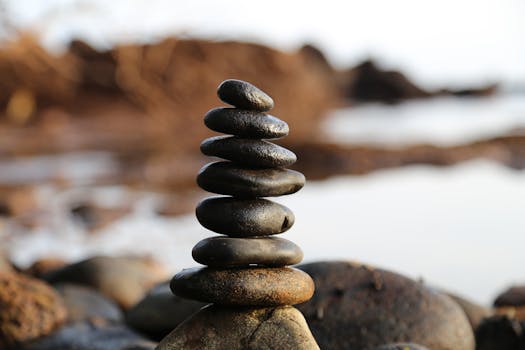
“
Mindfulness Practices for Stress Relief: Finding Inner Peace in a Busy World
Introduction to Mindfulness

Mindfulness practices have been around for thousands of years, originating from ancient Eastern cultures. The concept of mindfulness is simple yet profound: it involves paying attention to the present moment, without judgment or distraction. By cultivating mindfulness, we can reduce stress and anxiety, improve our relationships, and increase our overall sense of well-being. For more insights on enhancing your space for mindfulness, check out our post on Enchanting Floral Vibe: Bringing Serenity to Your Space.
Benefits of Mindfulness for Stress Relief

The benefits of mindfulness for stress relief are numerous. Some of the most significant advantages include:
- Reduced stress and anxiety: Mindfulness has been shown to decrease the production of stress hormones like cortisol, leading to a decrease in anxiety and stress levels.
- Improved mood: Mindfulness practices have been linked to increased production of neurotransmitters like serotonin and dopamine, which can help improve mood and reduce symptoms of depression.
- Enhanced focus and concentration: By training our minds to focus on the present moment, we can improve our ability to concentrate and stay focused, leading to greater productivity and efficiency.
- Better sleep: Mindfulness practices have been shown to improve sleep quality, leading to better rest and recovery.
Mindfulness Practices for Stress Relief

There are many mindfulness practices that can help with stress relief. Some of the most effective techniques include:
- Mindfulness meditation: This involves sitting quietly, focusing on the breath, and observing thoughts and emotions without judgment.
- Yoga: This combines physical movement with mindfulness techniques, helping to reduce stress and increase flexibility and balance.
- Body scan meditation: This involves lying down or sitting comfortably, bringing awareness to different parts of the body, and releasing tension and relaxation.
- Walking meditation: This involves paying attention to the sensation of each step, bringing mindfulness to the experience of walking.
Getting Started with Mindfulness

Getting started with mindfulness is easier than you think. Here are some tips to help you begin:
- Start small: Begin with short periods of mindfulness practice, such as 5-10 minutes a day, and gradually increase as you become more comfortable with the practice.
- Find a quiet space: Identify a quiet, comfortable space where you can practice mindfulness without distraction.
- Focus on the breath: Bring your attention to your breath, noticing the sensation of the air moving in and out of the body.
- Be gentle with yourself: Remember that mindfulness is a practice, and it’s okay if your mind wanders. Gently bring your attention back to the present moment.
Conclusion

Mindfulness practices offer a powerful tool for stress relief and finding inner peace in a busy world. By incorporating mindfulness into our daily lives, we can reduce stress and anxiety, improve our mood, and increase our overall sense of well-being. Whether you’re a seasoned meditator or just starting out, mindfulness practices can help you cultivate greater awareness, clarity, and peace in your life. For a journey of discovery into mindfulness, explore Unlocking the Ethereal Mystic Essence: A Journey of Discovery.
See more:
https://www.mindful.org/
https://www.headspace.com/
https://www.calm.com/





